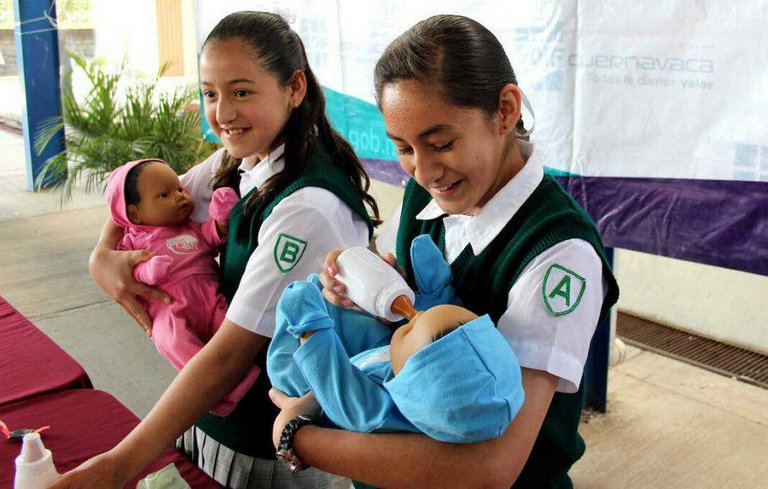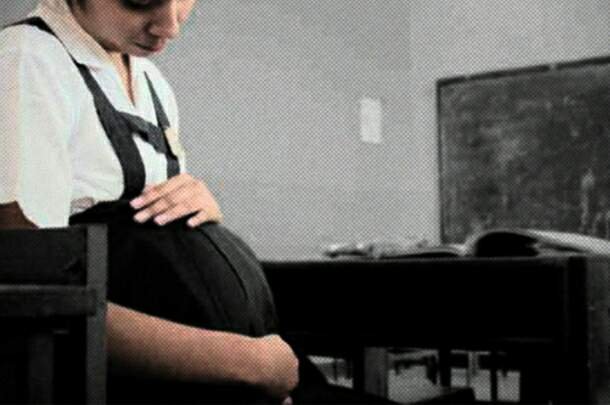
Complications of teenage pregnancy and childbirth are the leading cause of death for girls aged 15 to 19 in developing countries.
Adolescent pregnancy is a common problem in sub-Saharan Africa and in Latin American and Caribbean countries. In most cases of adolsecent pregnancy they are unwanted and unwanted. These pregnancies have a greater risk for the mother and for the baby than the pregnancies of women older than 20 years.
Early pregnancy increases the risk of spontaneous abortion or premature birth of the baby. In many cases it occurs through situations of physical, psychological or sexual violence. When a teenager becomes pregnant, psychological, social and family complications that negatively affect their school development are generated.
THE PROBLEM
Adolescent pregnancy or precocious pregnancy occurs when neither your body nor your mind are prepared for it; between the initial adolescence or puberty -the beginning of the fertile age- and the end of adolescence, which the WHO establishes at 19 years of age. The majority of teenage pregnancies are unplanned and unwanted pregnancies. At these ages, pregnancy can be the product of physical, symbolic, psychological and economic violence. The risk of dying from causes related to pregnancy, childbirth and postpartum is doubled if girls become pregnant before they are 15 years old.

THE REASONS
The empirical evidence indicates that among the factors associated with early motherhood are the characteristics of the adolescent's household: the economic income of her parents, their levels of education and the condition of household poverty. But there are also relevant contextual factors, such as access to comprehensive sexual education, different methods of family planning and, above all, the guarantee of the exercise of their rights. Likewise, adolescent pregnancy and motherhood are influenced by a set of cultural representations around gender, motherhood, sex, adolescence, sexuality and relationships.
THE CONSEQUENCES
Girls who become pregnant at an early age are at greater risk of maternal mortality and morbidity. Pregnancy during the first years after puberty increases the risk of miscarriage, obstruction of labor, postpartum hemorrhage, pregnancy-related hypertension, and lifelong debilitating conditions, such as obstetric fistula. Having very young children also means that women and girls are more vulnerable to other negative outcomes for maternal health from frequent births, unplanned pregnancies and unsafe abortions.
Babies born to adolescent mothers are more likely to be born dead, premature or underweight and are at higher risk of dying in childhood, due to the mother's young age. This risk is exacerbated by the lack of access to information and integral sexual and reproductive health services.

THE NUMBERS
It is estimated that 16 million girls between the ages of 15 and 19 give birth each year, and 95% of those births occur in developing countries. Girls between 10 and 14 years old are five times more likely to die during pregnancy and childbirth. Girls aged 15 to 19 are twice as likely as those over 20 to die in childbirth or pregnancy and the mortality rate of their neonates is approximately 50% higher. Each year, some 3 million girls aged 15 to 19 years undergo dangerous abortions.
Latin America and the Caribbean is the region with the highest adolescent fertility in the world after sub-Saharan Africa. In the region, a third of pregnancies correspond to children under 18 years of age, with almost 20% of those under 15 years of age.
Thanks for taking the time to read my post.
Posted using Partiko Android
Congratulations @escobar663! You have completed the following achievement on the Steem blockchain and have been rewarded with new badge(s) :
Click here to view your Board
If you no longer want to receive notifications, reply to this comment with the word
STOPTo support your work, I also upvoted your post!